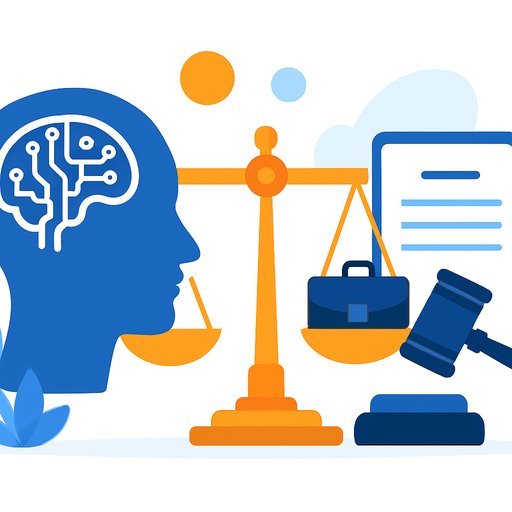AI Disclosure Rules by Platform: YouTube, Instagram/Facebook, and TikTok
Viewers are paying attention. Platforms are tightening labels. If your brand uses AI for voices, faces, or realistic scenes, disclosure is now part of the creative brief-because trust drives results.
This guide breaks down how each platform flags AI, where labels show up, what triggers them, and how to prevent false positives through better metadata hygiene. Use it to keep campaigns compliant and credible.
The quick labeling playbook for marketers
- Document every use of AI: voice cloning, image generation, composites, simulated environments, and realistic edits.
- Disclose when content could be perceived as real: people, places, or events that didn't actually happen.
- Keep provenance when disclosure is required; remove leftover metadata when it isn't.
- Test uploads on each platform before launch to see which labels appear.
- Include AI disclosure steps in creator briefs, SOWs, and QA checklists.
- Track impact on engagement and brand trust to guide future creative choices.
YouTube's "Altered or Synthetic" rule
What triggers disclosure
- AI or cloned voices that resemble real people.
- Manipulated visuals showing a person doing or saying something they didn't.
- Fabricated real-world events (e.g., staged news, simulated disasters) presented as real.
What doesn't trigger disclosure
- AI-assisted enhancements like color correction, stylization, or animation that aren't realistic depictions of real people or events.
Where labels appear
- An "Altered or synthetic content" banner below the player (and in Shorts within the feed).
- A "How this content was made" explainer linked to the label.
- Limited automatic detection for obvious deepfakes or cloned public-figure voices.
Brand checklist for YouTube
- Use the AI disclosure toggle during upload for any realistic synthetic elements.
- Spell out AI usage in creator briefs and storyboards so the disclosure isn't missed.
- Plan for potential CTR dips; weigh them against trust gains and policy compliance.
- Monitor for policy strikes or demonetization if disclosure is skipped.
Meta's C2PA rollout (Instagram and Facebook)
How detection works
Meta reads C2PA Content Credentials embedded by AI tools (e.g., Firefly, DALL.E 3, Microsoft Designer). If present, Instagram and Facebook add an "AI Info" or "Made with AI" label tied to the post. The manifest can include the tool, model, and timestamps.
This makes provenance traceable and helps stop AI images from spreading as authentic photography.
Learn more about the C2PA standard
Manual disclosure cases
If AI content is created or edited in non-C2PA workflows (e.g., composites in Canva Pro or Runway ML), add "AI-generated" in captions and use the Branded Content tool where relevant. Don't rely on automatic labels.
False positives and metadata hygiene
Residual provenance from prior edits can trigger labels on real photos. Creators have reported retouched portraits being labeled due to leftover Firefly or Photoshop Beta signatures. If the final asset isn't AI-generated, re-encode to strip legacy tags before upload.
Brand checklist for Meta
- Keep C2PA credentials when disclosure is required; strip them when final assets are human-made.
- Use ExifTool or Adobe's export settings to remove old provenance when appropriate.
- QA test a sample of posts in a staging profile to see if "AI Info" appears.
- Document provenance decisions for internal reviews and platform appeals, if needed.
TikTok's generative disclosure rules
When creators must disclose
- Realistic synthetic people, voices, or events.
- Voice clones of real individuals or public figures.
- Deepfake scenarios presented as real.
Stylized effects for creative or comic use generally don't require manual disclosure; TikTok already tags many of its own AI effects at the top-left of the video.
In 2024, TikTok removed deepfakes of public figures that lacked disclosure and violated impersonation rules-clear signals the platform enforces this policy.
How labels are displayed
- Creators can toggle an "AI-generated" badge; it appears beneath the username.
- TikTok can also label content automatically using metadata (including C2PA) and detection models.
Brand checklist for TikTok
- Instruct creators to use the AI label during upload if content looks real but is synthetic.
- Keep a disclosure line in the brief and in the captions for sponsored posts.
- Test final files; if unintended labels appear, check metadata and re-export.
- Track comments for sentiment shifts after labels appear; adjust formats accordingly.
Preventing false positives across platforms
How false positives happen
AI tools embed provenance manifests (usually JSON). If that file is later edited and re-exported, the old metadata can persist-even if the final asset is fully real. This has led to auto-labels on authentic photos and videos, including cases after Runway background removal or Photoshop Beta retouching.
Creators have also reported videos being labeled "AI-generated" while they were simply discussing AI content. These incidents show why metadata checks belong in QA.
Best practices for cleaning metadata
- Re-encode before upload using "Save for Web" or media encoder presets that strip EXIF and C2PA when disclosure isn't required.
- Inspect files with ExifTool, Jeffrey's Image Metadata Viewer, or Adobe's Verify Content Credentials.
- Segment storage: keep provenance on verified AI assets; store human-made finals separately and clean.
- Audit workflows quarterly; test random assets on Meta and TikTok for unexpected labels.
Why this matters
Unintended labels can reduce engagement and invite extra scrutiny. A clean metadata process keeps your disclosure accurate and consistent-and keeps perception aligned with your creative intent.
Building authenticity in the age of generative media
Disclosure isn't a checkbox. It's a trust signal. Clear labeling sets your brand apart from the noise and prevents policy headaches.
The formula is simple: document your AI use, disclose realistic synthetic content, and manage metadata with care. Teams that treat provenance as quality control will ship cleaner campaigns-and keep audience trust intact.
FAQs
What's driving platforms to tighten AI labeling requirements?
Commercial AI tools make lifelike assets easy to produce at scale. Provenance helps protect brand safety and gives users context.
How do "generative" and "predictive" AI differ in content production?
Generative tools create new media from prompts; predictive models forecast outcomes. That split influences which assets need labels.
Why is "social AI" influencing disclosure policies?
Platforms analyze behavior, captions, and context to spot manipulated media and decide when to flag content.
Which AI trends matter most for marketers in 2025?
Multimodal creation, metadata standards, and provenance verification. These shape how platforms classify content as synthetic or authentic.
How do prompt marketplaces affect transparency?
Shared prompts can produce near-identical outputs. Clear provenance and consistent disclosure keep ownership and authenticity straight.
Why are brands testing generative video ads?
Dynamic storytelling is faster to produce, but realistic synthetic scenes require disclosure to stay compliant and credible.
How is Etsy's AI art boom connected to disclosure?
It shows how quickly synthetic media blurs authorship online-another reason clear labels matter across social.
What does Meta's Restyle AI mean for labels?
Generative editing features in Reels make automated C2PA tagging even more central. Expect more auto-labeling as features expand.
Next step: upskill your team
If you want structured training on AI policy, metadata, and disclosure for marketing teams, explore our certification for marketers: AI Certification for Marketing Specialists. For broader options, see Courses by Job.
Your membership also unlocks:






